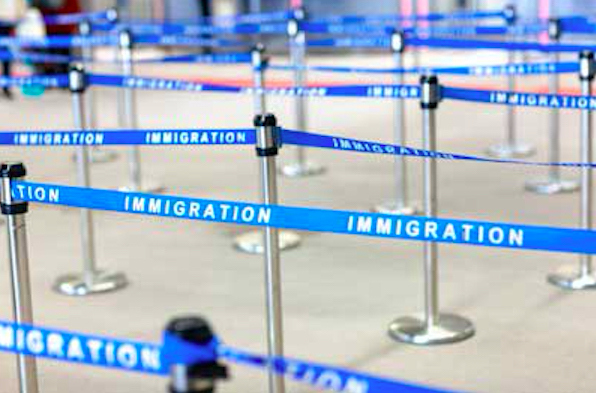
Each country is reacting to the impact of the COVID-19 pandemic in its own unique way by implementing immigration reforms and measures to manage travel restrictions and continuous document compliance support during the outbreak. Here, Leanne Cottrell, Head of Immigration for global mobility specialists Sterling Lexicon looks at the implications for immigration practice beyond COVID19- and how we settle into new routines and processes post the pandemic.
Despite the various immigration processes being implemented globally, one common factor is the movement towards facilitating submissions that do not require personal presence or face-to-face meetings. We are also seeing flexibility in the provision of original documents, measures to accommodate automatic renewals where a request for submission isn’t logistically feasible and flexibility in overriding punitive measures where non-compliance occurs due to no fault of the individual in question.
China led the way in introducing temporary automatic renewals for residence permits and waiving the request for face-to-face original document verification for work permit applications. Several countries have followed suit and as an example, both the UK and US have implemented measures to remotely evidence right to work documentation during the pandemic.
While the above measures have been introduced in several jurisdictions as a reaction to the impact of COVID-19, for many countries electronic visa, work and residence permit processing was already in place. In recent years, the industry has seen a progressive move towards more efficient and robust processing methods to facilitate applications with countries such as Australia, Brazil, Spain and Ireland leading the way in integrating e-processing into their systems for some or all of their application processes.
Can we therefore determine that COVID-19 has accelerated this development, and can we hope that more jurisdictions will retain this as a permanent feature of their immigration controls rather than returning to the previous status quo?
Whereas in the past many government authorities have been happy to stick to the established processing methods and it was widely accepted that applications in their jurisdictions would be a long and bureaucratic affair, the new methods adopted to facilitate processing while offices remain closed and employees work from home have perhaps demonstrated to those that were slower to embrace advancements, that it is possible to do so.
 Not just is it possible to change and adapt, but due to the speed that authorities have been forced to react, it has become clear that when it is necessary, change can be implemented and accepted rapidly and effectively. There will undoubtedly be implementation teething issues and processes to be refined, but there is no hiding from the fact that progress can be made.
Not just is it possible to change and adapt, but due to the speed that authorities have been forced to react, it has become clear that when it is necessary, change can be implemented and accepted rapidly and effectively. There will undoubtedly be implementation teething issues and processes to be refined, but there is no hiding from the fact that progress can be made.
Another element of population movement that comes to our attention is the ability to monitor individual’s movement and the validity of their documentation. As many countries have adopted the approach of auto-renewing documentation due to expire during the restricted travel conditions, they are reliant on their internal systems tracking this information or the integrity of the permit or visa holder to declare themselves and request the renewal.
Many systems now also hold applicant’s biometric data, facilitating future documentation processing and potentially permitting greater visibility of population movement and tracking non-compliant individuals.
With more countries sharing data between government agencies and members of communities such as the Schengen zone and Mercosur working in collaboration with each other, it is further possible to obtain greater visibility of the transient global population. Has the mass increase in border control COVID-19 screening and monitoring of quarantined individuals also accelerated the gathering of personal data and biometrics on a global basis?
In response to recent terrorist security concerns and migration issue in Europe, the Schengen zone has worked towards creating technology with the capabilities of tracking individuals who do not require a visa to enter the member states.
The European Travel Information and Authorisation System (ETIAS) is an electronic system designed to reduce procedures and wait times, as well as address recent security concerns.
What COVID-19 has demonstrated is that while closing borders and restricting travel between countries may be key in controlling the spread of the virus, working closely and collaboratively with other jurisdictions globally and sharing important data, is equally important in managing the movement of individuals who are either critical in providing a much needed service within the country they are entering, or on the other side of the coin, pose a threat both from a medical or security perspective.
Technology such as ETIAS permits this sharing of information and data and could be something we see developing more in the near future.
One thing is certain; from an immigration perspective this unprecedented time will influence process developments in many locations and accelerate change that may be both long overdue but equally unsettling and challenging to navigate until we settle into new routines and processes post the pandemic.
For more details about News & Events from Sterling Lexicon in Scotland please click the link below:
https://www.sterlinglexicon.com/services/scotland-relocation-services

Leave A Comment
You must be logged in to post a comment.